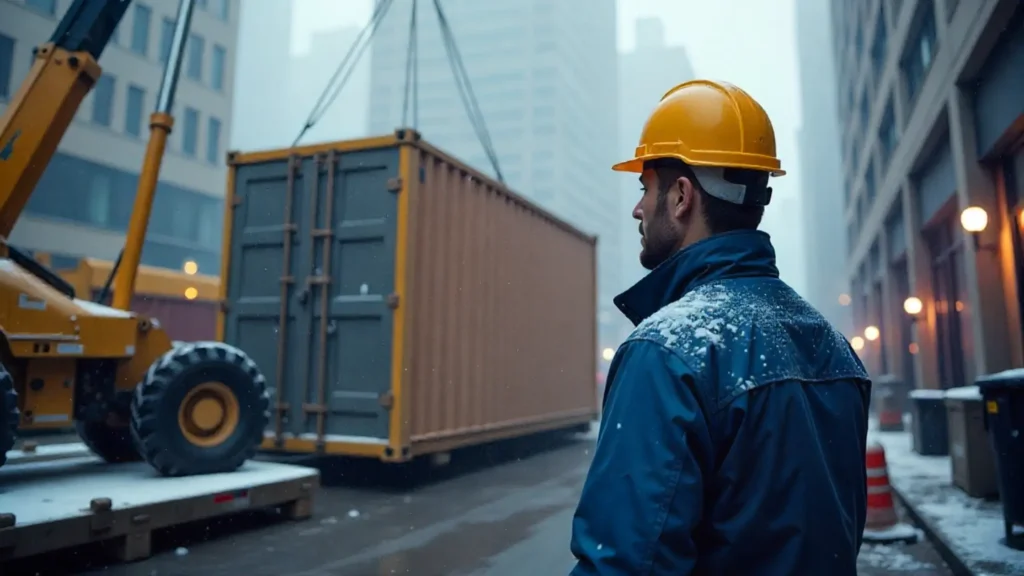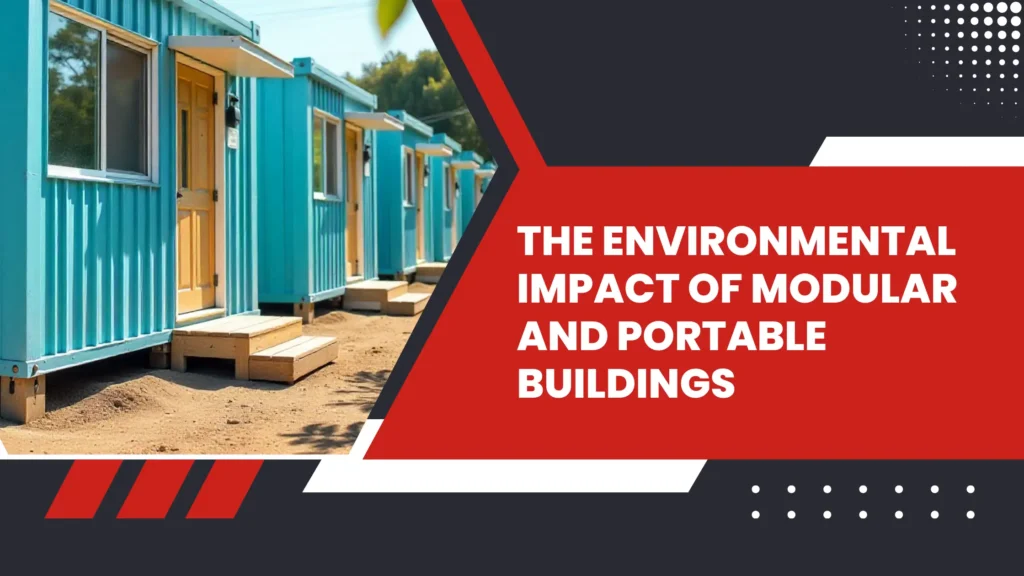In recent years, modular and portable buildings have been getting more praise from contractors. Not only is it cost-effective, but it is also a flexible solution that ensures environmental safety, apparently surpassing traditional construction methods.
So, when we talk about the UAE, the country is all about skyscrapers, tall buildings, and the best of the best designs, with durability being the example for the whole world. Besides, as the world continues to support more sustainable choices in construction, modular and portable types of construction are more in favour.
Modular and portable buildings are a progressive option in both urban and rural locations due to their lower construction waste, effective energy use, and recyclable materials.
But you still want to know how it impacts the environment? For the answer, we need to understand the details. Let’s do it.

Top Reasons Why Modular and Portable Buildings Are a Better Choice
With traditional construction, the environment was greatly suffering.
But with the latest portable building techniques by Portacabin manufacturer in the UAE, here is the major impact of modular buildings on the environment:
1. Reduced Construction Waste
The substantial decrease in construction waste is among the most obvious advantages of modular and portable buildings.
Modular units are produced in controlled factory settings, as opposed to traditional building techniques that produce a lot of debris on the job site.
According to the WRAP report in 2009, up to 90% less waste is produced thanks to this process, which guarantees accurate material usage, standardized components, and fewer errors. This waste reduction is a significant benefit in an area like the UAE, where sustainability initiatives are in line with Vision 2031.
Additionally, leftover materials from modular factories are frequently reusable for other projects, which helps to preserve the environment even more.
2. Energy Efficiency and Resource Conservation
Another important factor influencing how modular buildings affect the environment is energy efficiency. Over the course of their lifetime, modular units use less energy because they are built with energy-efficient windows, sophisticated insulation, and optimized heating and cooling systems.
To reduce the strain on nearby resources, many of these buildings also incorporate solar panels, intelligent lighting controls, and water-saving fixtures. Businesses in the UAE can greatly reduce their operational energy consumption by implementing eco-friendly modular construction, which will help them meet the country’s renewable energy targets.
3. Sustainable Material Choices
Eco-friendly materials are used extensively in the construction of contemporary sustainable portable buildings in the UAE. Durability and environmental considerations are taken into account when selecting building materials, which range from recycled steel and aluminium to sustainably sourced wood and non-toxic finishes.
For example, compared to traditional heavy steel, light-gauge steel structures are becoming increasingly popular due to their strength, recyclability, and reduced environmental impact. These materials reduce carbon emissions during production and installation in addition to ensuring long-lasting performance.
4. Flexibility and Reduced Environmental Disruption
The adaptability and mobility of modular and portable buildings are another significant benefit. These units, manufactured by the best Portacabin suppliers in the UAE, reduce the need for demolishing existing structures, which often results in waste and land disturbance, as they can be easily moved, expanded, or repurposed.
Because of this flexibility, businesses can react to shifting demands without having a lasting negative influence on the environment. In the UAE, for instance, temporary schools, site offices, or medical facilities can be constructed using portable building solutions, which can then be relocated rather than being disassembled or discarded.
5. Faster Construction, Lower Emissions
Long schedules, large machinery, and frequent material transportation are all common features of conventional construction projects, which raise carbon emissions.
Modular office solutions in the UAE and other prefabricated buildings in the UAE, on the other hand, are manufactured more rapidly in factories and assembled on site more quickly. This simplified procedure lowers overall emissions, minimizes noise and dust pollution, and reduces the need for transportation.
The shorter build cycle not only saves money for businesses seeking affordable temporary structures but also promotes sustainability by reducing the carbon footprint.
6. Recycling and Reusability
The environmental credentials of modular components are further enhanced by their recyclability. Steel, glass, and certain composites are among the many materials that can be disassembled and reused in various projects.
Furthermore, modular units themselves can be disassembled and reassembled in different locations, prolonging their useful life and preventing them from being sent to landfills.
For UAE governments and organizations looking to adopt a circular economy model, this reusability is essential.
7. Aligning with UAE Sustainability Goals
Modular and portable buildings are uniquely positioned to support long-term environmental goals as sustainability becomes a pillar of national policy.
Energy demand, emissions, and land use are all directly reduced by these solutions, which range from environmentally friendly modular construction methods to the creation of sustainable portable buildings in the UAE.
By doing this, they contribute significantly to the development of greener communities and satisfy the rapid needs of contemporary industries.
Conclusion
In conclusion, modular and portable buildings are reshaping the construction industry with eco-friendly practices, recyclable materials, and efficient energy use.
Compared to traditional methods, they deliver faster, cleaner, and more sustainable results, making them ideal for today’s evolving needs.
For businesses, government projects, and communities, portable rentals in the UAE are not just cost-effective but also vital for reducing environmental footprints.
Companies like Emirates Portacabin are leading the way by providing flexible, durable, and environmentally conscious solutions that align with the UAE’s long-term sustainability goals. Choosing modular construction today means investing in a greener, more responsible tomorrow.
FAQs
What is the environmental impact of modular buildings compared to traditional construction?
Modular buildings create significantly less waste, use fewer resources, and lower emissions compared to traditional construction. Their factory-controlled processes and recyclable materials ensure reduced environmental disruption, supporting greener, more sustainable building practices in the UAE.
Are portable buildings in the UAE considered sustainable and eco-friendly?
Yes, portable buildings in the UAE are highly sustainable and eco-friendly. They utilize energy-efficient materials, reduce waste, and promote reusability. This makes them an ideal solution that aligns with the UAE’s sustainability and environmental protection goals.
How does modular construction reduce waste and energy use in projects?
Modular construction reduces waste by manufacturing components in controlled environments, minimizing errors and material excess. Energy-efficient designs, insulation, and renewable options like solar panels ensure lower energy use throughout the project lifecycle, promoting sustainable construction.

